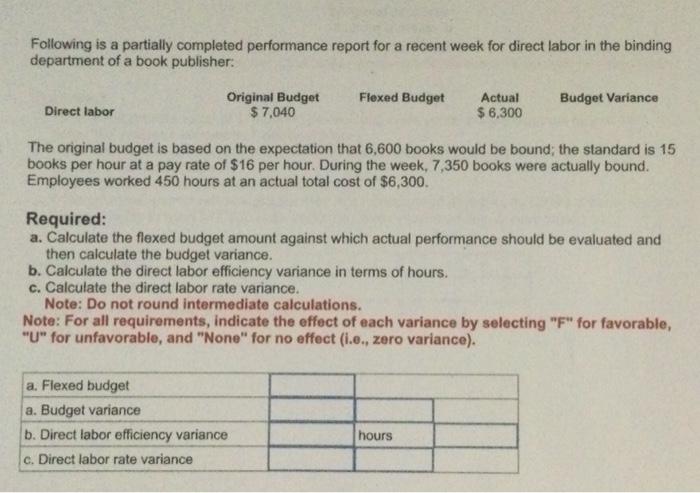Answered step by step
Verified Expert Solution
Question
1 Approved Answer
Following is a partially completed performance report for a recent week for direct labor in the binding department of a book publisher: Direct labor Original
Following is a partially completed performance report for a recent week for direct labor in the binding department of a book publisher: Direct labor Original Budget $ 7,040 Flexed Budget Actual $ 6,300 The original budget is based on the expectation that 6,600 books would be bound; the standard is 15 books per hour at a pay rate of $16 per hour. During the week, 7,350 books were actually bound. Employees worked 450 hours at an actual total cost of $6,300. a. Flexed budget a. Budget variance b. Direct labor efficiency variance c. Direct labor rate variance Budget Variance Required: a. Calculate the flexed budget amount against which actual performance should be evaluated and then calculate the budget variance. b. Calculate the direct labor efficiency variance in terms of hours. c. Calculate the direct labor rate variance. Note: Do not round intermediate calculations. Note: For all requirements, indicate the effect of each variance by selecting "F" for favorable, "U" for unfavorable, and "None" for no effect (i.e., zero variance). hours

Step by Step Solution
There are 3 Steps involved in it
Step: 1

Get Instant Access to Expert-Tailored Solutions
See step-by-step solutions with expert insights and AI powered tools for academic success
Step: 2

Step: 3

Ace Your Homework with AI
Get the answers you need in no time with our AI-driven, step-by-step assistance
Get Started


